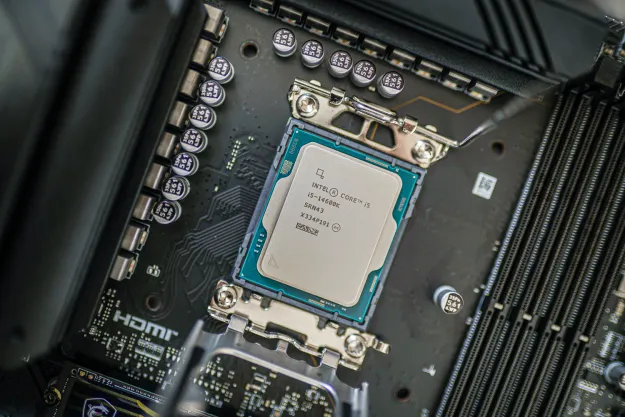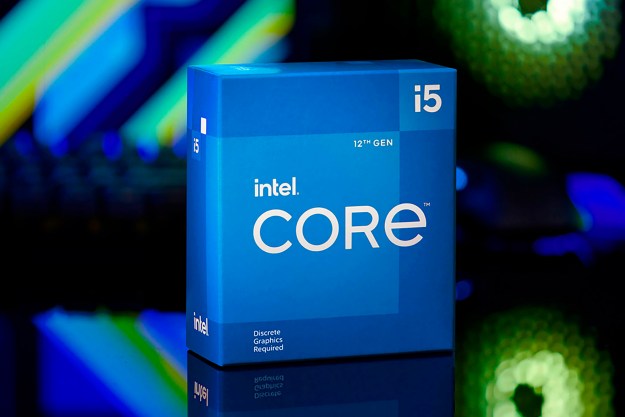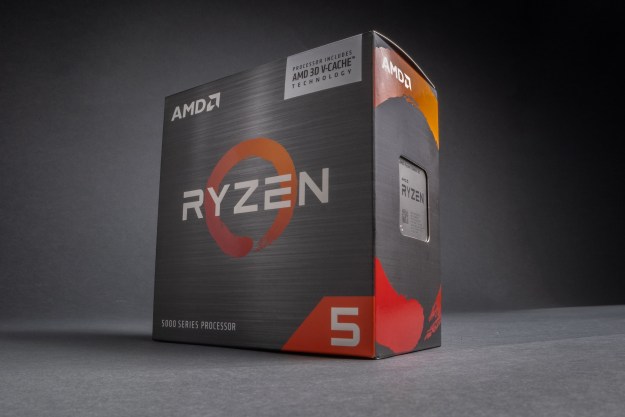As impressive as Intel’s high-end Core i7 and Core i9 CPUs are, the value of performance per dollar is much better on the lower end of things. Core i3 and Core i5 CPUs offer powerful cores for gaming and work at a much more modest price than their higher-end counterparts. But which is best for your next system?
To help you decide, we put together a deep-dive look at the newest and best CPUs from Intel in both the Core i3 and Core i5 range. Whether you want to game all night on a prebuilt system or build a new PC for work-related productivity, this guide will help you find the right CPU for you.
If you’d prefer just look at the best CPUs on the market, here are Intel and AMD’s top chips.
What’s out there?
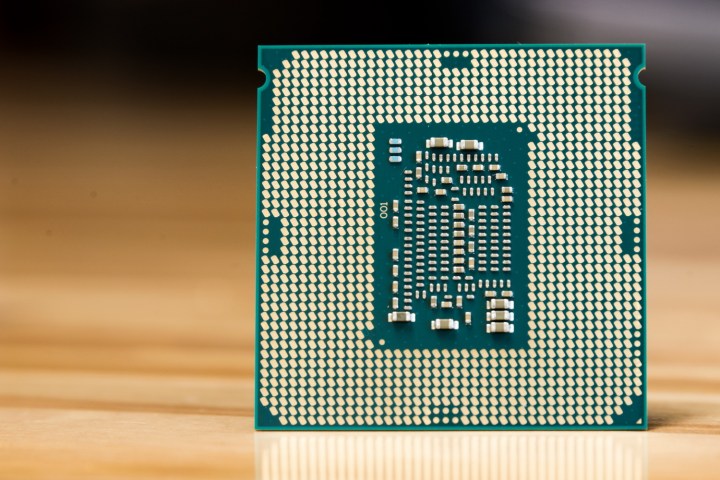
Before we dig into the minutia of the individual processors and what they can do, let’s take a broad look at the latest range of CPUs from Intel on desktop and mobile for both Core i3 and Core i5 designs.
Desktop
Intel’s desktop range of CPUs has lost some ground to AMD in recent years, but they’re still excellent for gaming and work and, thanks to the increased competition, have more cores and higher clocks than ever. Additional features include Thunderbolt 3 ports, improved A.I. performance, and significant wireless speed improvements. All of the current desktop processors are listed below, though note that Intel is rumored to launch its 11th generation of desktop processors in either late 2020 or early 2021.
| Cores | Threads | Base clock | Boost clock | Graphics | TDP | Cost** | |
| Core i5-9600K* | 6 | 6 | 3.7GHz | 4.6GHz | UHD 630 @ 1.15GHz | 95W | $220 |
| Core i5-9600 | 6 | 6 | 3.1GHz | 4.6GHz | UHD 630 @ 1.15GHz | 65W | $210 |
| Core i5-9500* | 6 | 6 | 3.0GHz | 4.4GHz | UHD 630 @ 1.10GHz | 65W | $155 |
| Core i5-9500T | 6 | 6 | 2.2GHz | 3.7GHz | UHD 630 @ 1.10GHz | 35W | $192 |
| Core i5-9400* | 6 | 6 | 2.9GHz | 4.1GHz | UHD 630 @ 1.05GHz | 65W | $155 |
| Core i5-9400T | 6 | 6 | 1.8GHz | 3.4GHz | UHD 630 @ 1.05GHz | 35W | $182 |
|
Core i5-10400T |
6 | 12 | 2.0GHz | 3.6GHz | UHD 630 @ 1.05GHz | 35W | $182 |
|
Core i5-10500 |
6 | 12 | 3.1Ghz | 4.5GHz | UHD 630 @ 1.05GHz | 65W | $236 |
|
Core i5-10600T |
6 | 12 | 2.4GHz | 4.0GHz | UHD 630 @ 1.05GHz | 35W | $241 |
|
Core i5-10400 |
6 | 12 | 2.9GHz | 4.3GHz | UHD 630 @ 1.05GHz | 65W | $182 |
|
Core i5-10600 |
6 | 12 | 3.3GHz | 4.8GHz | UHD 630 @ 1.05GHz | 65W | $261 |
|
Core i5-10600K* |
6 | 12 | 4.1GHz | 4.8GHz | UHD 630 @ 1.05GHz | 95W | $320 |
|
Core i5-10500T |
6 | 12 | 2.3GHz | 3.8GHz | UHD 630 @ 1.05GHz | 35W | $192 |
| Core i3-9350K* | 4 | 4 | 4.0GHz | 4.6GHz | UHD 630 @ 1.15GHz | 91W | $215 |
| Core i3-9320 | 4 | 4 | 3.7GHz | 4.4GHz | UHD 630 @ 1.15GHz | 62W | $190 |
| Core i3-9300 | 4 | 4 | 3.7GHz | 4.3GHz | UHD 630 @ 1.15GHz | 62W | $167 |
| Core i3-9300T | 4 | 4 | 3.2GHz | 3.8GHz | UHD 630 @ 1.10GHz | 35W | $143 |
| Core i3-9100* | 4 | 4 | 3.6GHz | 4.2GHz | UHD 630 @ 1.10GHz | 65W | $89 |
| Core i3-9100T | 4 | 4 | 3.1GHz | 3.7GHz | UHD 630 @ 1.10GHz | 35W | $122 |
|
Core i3-10320 |
4 | 8 | 3.8GHz | 4.6GHz | UHD 630 @ 1.10GHz | 65W | $190 |
| Core i3-10300 | 4 | 8 | 3.7GHz | 4.4GHz | UHD 630 @ 1.10GHz | 65W | $177 |
| Core i3-10300T | 4 | 8 | 3.0GHz | 3.9GHz | UHD 630 @ 1.10GHz | 35W | $143 |
|
Core i3-10100 |
4 | 8 | 3.6GHz | 4.3GHz | UHD 630 @ 1.10GHz | 65W | $150 |
| Core i3-10100T | 4 | 8 | 3.0GHz | 3.8GHz | UHD 630 @ 1.10GHz | 35W | $143 |
* These CPUs are also available as an “F” variant. That means they ship with no onboard graphics. All other specifications are identical to the original version.
** All prices for major CPUs were correct at the time of this writing based on active listings at major retailers. “T” chips, however, are not on sale to the general public. The cost is based on MSRP at launch.
Laptop
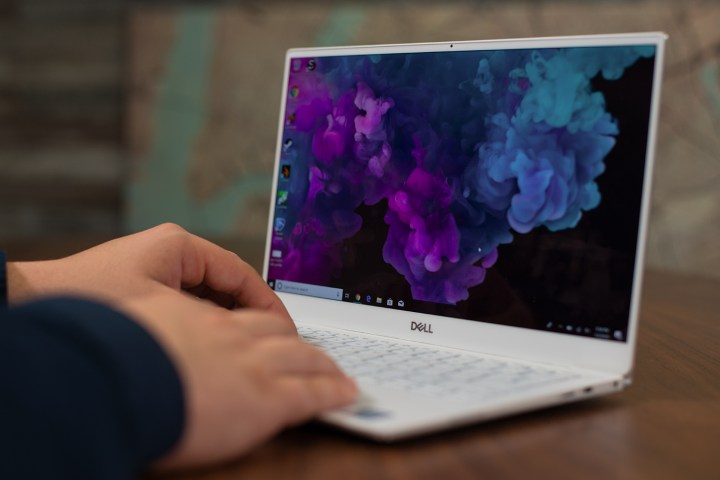
Intel’s laptop processors have been much more impressive over the past year, with new 10nm options with excellent onboard graphics, as well as higher-clocked 14nm alternatives.
| Cores | Threads | Base clock | Boost clock | Graphics | TDP | |
| Core i5-1035G7 | 4 | 8 | 1.2GHz | 3.7GHz | Iris Plus (11th generation) @ 1.05GHz | 12-25W |
| Core i5-1035G4 | 4 | 8 | 1.1GHz | 3.7GHz | Iris Plus (11th generation) @ 1.05GHz | 12-25W |
| Core i5-1035G1 | 4 | 8 | 1.0GHz | 3.6GHz | UHD @ 1.05GHz | 13-25W |
| Core i5-1030G7 | 4 | 8 | 0.8GHz | 3.5GHz | Iris Plus (11th generation) @ 1.05GHz | 12W |
| Core i5-1030G4 | 4 | 8 | 0.7GHz | 3.5GHz | Iris Plus (11th generation) @ 1.05GHz | 12W |
| Core i3-1005G1 | 2 | 4 | 1.2GHz | 3.4GHz | UHD @ 0.9GHz | 13-25W |
| Core i3-1000G4 | 2 | 4 | 1.1GHz | 3.2GHz | Iris Plus (11th generation) @ 0.9GHz | 12W |
| Core i3-1000G1 | 2 | 4 | 1.1GHz | 3.2GHz | UHD @ 0.9GHz | 12W |
| Core i5-10210U* | 4 | 8 | 1.6GHz | 4.2GHz | UHD 620 @ 1.10GHz | 10-25W |
| Core i3-10110U* | 2 | 4 | 2.1GHz | 4.1GHz | UHD 620 @ 1.00GHz | 12.5W |
| Core i5-9400H | 4 | 8 | 2.5GHz | 4.3GHz | UHD 630 @ 1.10GHz | 45W |
| Core i5-9300H | 4 | 8 | 2.4GHz | 4.1GHz | UHD 630 @ 1.05GHz | 45W |
| Core i5-8500B | 6 | 6 | 3.0GHz | 4.1GHz | UHD 630 @ 1.10GHz | 65W |
| Core i5-8400B | 6 | 6 | 2.8GHz | 4.0GHz | UHD 630 @ 1.05GHz | 65W |
| Core i5-8400H | 4 | 8 | 2.5GHz | 4.2GHz | UHD 630 @ 1.10GHz | 45W |
| Core i5-8300H | 4 | 8 | 2.3GHz | 4.0GHz | UHD 630 @ 1.00GHz | 45W |
| Core i5-8279U | 4 | 8 | 2.4GHz | 4.1GHz | Iris Plus 655 @ 1.15GHz | 28W |
| Core i5-8269U | 4 | 8 | 2.6GHz | 4.2GHz | Iris Plus 655 @ 1.10GHz | 28W |
| Core i5-8259U | 4 | 8 | 2.3GHz | 3.8GHz | Iris Plus 655 @ 1.05GHz | 28W |
| Core i5-8257U | 4 | 8 | 1.4GHz | 3.9GHz | Iris Plus 645 @ 1.05GHz | 15W |
| Core i3-8100B | 4 | 4 | 3.6GHz | N/A | UHD 630 @ 1.05GHz | 65W |
| Core i3-8100H | 4 | 4 | 3.0GHz | N/A | UHD 630 @ 1.00GHz | 45W |
| Core i3-8109U | 2 | 4 | 3.0GHz | 3.6GHz | Iris Plus 655 @ 1.05GHz | 28W |
| Core i3-L13G4 |
5 | 5 | 0.8GHz | 2.8GHz | UHD 630 @ 1.00GHz | 7W |
| Core i3-10110U |
2 | 4 | 2.1GHz | 4.1GHz | UHD 630 @ 1.00GHz | 15W |
| Core i3-10110Y |
2 | 4 | 1.0GHz | 4.0Ghz | UHD 630 @ 1.00GHz | 7W |
| Core i3-8145U |
2 | 4 | 2.1GHz | 3.9GHz | UHD 630 @ 1.00GHz | 15W |
| Core i5-10310Y |
4 | 8 | 1.1GHz | 4.10GHz | UHD 630 @ 1.05GHz | 7W |
| Core i5-10210Y |
4 | 8 | 1.0GHz | 4.0GHz | UHD 630 @ 1.05GHz | 7W |
| Core i5-10300H |
4 | 8 | 2.5GHz | 4.5GHz | UHD 630 @ 1.05GHz | 45W |
| Core i5-10400H | 4 | 8 | 2.6GHz | 4.6GHz | UHD 630 @ 1.10GHz | 45W |
| Core i3-1110G4 | 2 | 4 | 1.8GHz | 3.9GHz | UHD Graphics (for 11th generation processors) @ 1.10GHz | 15W |
| Core i3-1115G4 | 2 | 4 | 3.0GHz | 4.1GHz | UHD Graphics (for 11th generation processors) @ 1.25GHz | 28W |
| Core i5-1130G7 | 4 | 8 | 4.0GHz | N/A | Iris Xe (12th generation) @ 1.10GHz | 15W |
| Core i5-1135G7 | 4 | 8 | 4.20GHz | N/A | Iris Xe (12th generation) @ 1.30GHz | 28W |
* These two CPUs are part of the Comet Lake generation, which is still classified as 10th-generation, though it uses a 14nm process, giving it higher clock speeds than the other 10th-generation Ice Lake CPUs. Its graphics are far weaker, however, and the CPUs aren’t as impressive clock for clock.
Intel’s laptop lineup is far more expansive than its desktop generation at this time, as it contains four (somewhat) distinct generations of CPUs. The 8th-generation is the most populous and is slowly being replaced by the two 10th-generation architectures. The 9th-generation didn’t make much of a dent in Intel’s mobile business, but it’s still available in a limited form. The newest additions are the four 11th-generation. The two i3s have already launched, but the i5s have only been announced. They should show up soon, though.
There’s a lot to unpack here, but several general rules apply, which we’ll address individually below.
How many cores and threads do you need?
Whether you’re looking at a desktop or mobile CPU, one of the most important considerations is how many cores and threads you need. They can be one of the most apparent differences between higher-end Core i5 and lower-end Core i3 CPUs and can contribute significantly to cost, power demands, and thermal output.
Modern PCs, whether desktop or laptop, are great at performing multiple tasks at once, and having separate cores and (to a lesser extent) different threads to handle those tasks makes for a much faster PC experience. So, if you’re a heavy multitasker who likes to browse the web with lots of tabs open at once, or wants to stream games while playing them, or watch Netflix while working, more cores and threads can help.
There’s no hard and fast rule, as everyone’s needs and uses are different, but here are some general tips:
- Serious gamers should have, at a minimum, a quad-core CPU, but there is some benefit to having six and even more cores. Higher thread counts are less important, but there is a slight benefit to them. A Core i5 CPU is essential when it comes to gaming. Higher clock speeds and more physical cores boost performance in games with a lot of A.I.-driven NPCS — like Hitman 2 and Civilization VI.
- For work and productivity tasks like video editing, transcoding, photo editing, or heavy web browsing, higher thread counts are a real benefit. Six cores are excellent, but you’d also do well with four cores and eight threads if you opt for a CPU with hyperthreading.
- For general web browsing and media viewing, you can get away with a dual-core CPU with four threads. A full quad-core (even with just four threads) will give you more multitasking performance, but either way, a Core i3 will be more than enough.
Having more cores than you need does provide some measure of future-proofing, but in the here and now, buying what you need is a good idea.
What about clock speed?

The next primary consideration when it comes to system performance is clock speed. That’s the Gigahertz (GHz) rating. For comparable CPUs in the same generation with the same core counts, clock speed has the most significant impact on their capabilities.
If you are looking to perform tasks that need quick bursts of high power, like photo editing, then a higher boost clock (a temporary higher frequency during heavy system load) is going to be of some benefit. If you want more sustained performance, like for gaming, a higher base clock (the lowest clock the chip will run at) is worth aiming for.
Core i5 CPUs tend to have higher clock speeds overall and will deliver more exceptional performance, but there are some Core i3 chips which clock pretty high too — especially on desktop.
Clock speed is more of a linear improvement than core and thread counts. Just about everything is faster with higher clocks, but more cores will deliver more exceptional multithreaded performance than a higher top clock speed in most cases.
11th vs. 10th vs. 9th vs. 8th generation
It’s a confusing time to buy an Intel CPU because there are five different generations of CPUs to pick from: An 11th generation, two 10th generations, a 9th generation, and an 8th generation. There are some unique aspects to each generation, and there is plenty of crossover for even more confusion. But as with other aspects of these CPUs, there are some general rules to consider.
The 8th generation is the oldest and, in general, has the worst performance and efficiency, but that’s not always the case. CPUs from the 9th and 10th generations with comparable specifications will be faster, but an 8th-generation Core i5 chip may still beat a Core i3 from the newer generations in most cases.
On the desktop, 10th-gen is king. There is little point in going back to the eighth-generation unless you find a particularly good deal. The 10th-generation CPUs on desktop launched in April 2020 and differ greatly from same-generation offerings on mobile.
As for those 10th-generation chips on mobile, the Core i5s are far more capable, with much faster clock speeds, making them excellent for gaming and heavy editing tasks. For general web browsing and entry-level gaming, Core i3s are perfectly acceptable. In terms of Ice Lake versus Comet Lake, the latter tends to be faster thanks to higher clock speeds, but the onboard graphics aren’t as good.
Mobile users have access to Intel’s 11th-generation processors, too. In addition to onboard Iris Xe graphics — more on that in the next section — the new Tiger Lake mobile CPUs showcase a massive leap in performance, despite being based on the same architecture as Ice Lake.
In short, the latest is the best. On desktop, that’s 10th-gen Comet Lake, and on mobile, that’s 11th-gen Tiger Lake.
Onboard graphics
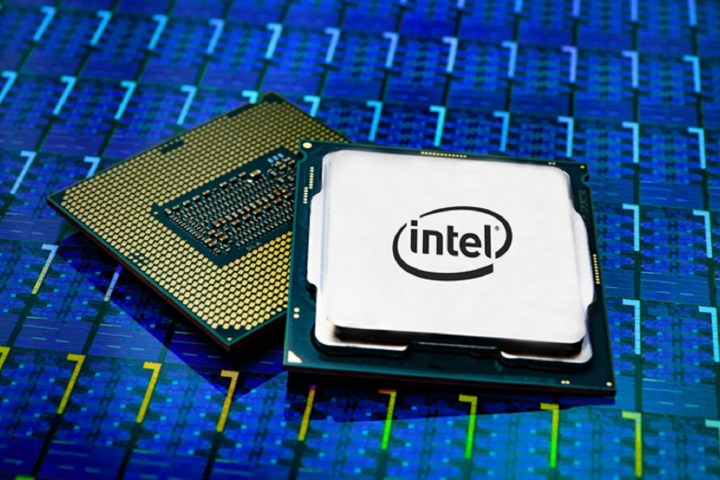
If you don’t plan to have a graphics card in your PC, then you need to make sure that your CPU has onboard graphics, or you won’t be able to display anything on your monitor(s). Make sure to avoid the CPUs with “F” in their name, as their graphics chip is disabled.
In terms of the Core i5 versus Core i3 debate, desktop chips are pretty much all the same. There’s a few megahertz (MHz) in it, but all the UHD 630 solutions are roughly as fast as each other. They’re suitable for entry-level gaming, but don’t expect great detail or high frames per second.
The new 11th-generation mobile Intel processors include Iris Xe graphics, which is the same architecture Intel plans to use in its upcoming discreet GPUs. Although we don’t have any performance numbers for on-board Iris Xe chips, they’re a significant step up for integrated graphics. A recent benchmark of an Xe-LP chip — the design Intel is using for integrated graphics — showed about 2.3 teraflops for the chip, roughly equaling the performance of a Nvidia GTX 1050 Ti.
Of the four new mobile processors, only the two i5s feature Intel’s new graphics tech. Although any form of on-board video is still a far cry from a dedicated graphics card, the new i5s certainly have an edge when it comes to gaming.
If you’re just looking to browse the web and watch Netflix and YouTube, any Core i3 will do. It might be better to hold off until the upcoming Rocket Lake desktop processors hit the market, though. These processors should come with Xe graphics.
Power and thermals
If you want a desktop PC that doesn’t push its cooler(s) too much, then lower-wattage Core i3 CPUs are the way to go. Core i5s will still work with the stock cooler, but with more cores and higher clock speeds (the K-series especially) comes a higher TDP, which means greater demand on your power supply and your cooler. That may make for a noisier PC and could warrant an aftermarket cooler to keep temperatures and noise levels low.
TDP is arguably more important on mobile because it has an impact on weight, size, noise levels, and battery life. Lower TDPs typically means better battery life and a lighter, more portable build, though not always. That would suggest a Core i3 would be better, but it’s essential to take note of the new-generation i5s. Many of those have a broader range of TDP depending on what you’re doing, meaning that they are more efficient and can help extend battery life and keep thermals low through smart power management.
Core i3s will do for most, but don’t discount a Core i5
Making a choice comes down to what you need from your CPU, but Intel doesn’t make it easy with so many available options. Any generation Core i3 CPUs are solid chips for general use that can handle light workloads, media viewing, web browsing, and entry-level gaming with ease.
The 10th-generation CPUs have greatly improved onboard graphics that overpower earlier iterations and the 11th-generation mobile.
If the Core i3 isn’t up to par with your expectations, you can turn to the Core i5. The Core i5 is more expensive, but it’s worth it due to increased speed, cores, and threads, which make its performance incomparable.
It’s important to mention that the Core i5 often comes with higher power and thermal requirements. That being said, make sure that you only purchase what you need or what you will only be using for a short time. While it might seem logical to go above and beyond with your upgrade in hopes you’ll use it long-term, you might be wasting power and other computing resources on the Core i5 in the meantime.
Editors' Recommendations
- Gamers are reportedly returning Intel Core i9 CPUs in droves
- Nice try, Intel, but AMD 3D V-Cache chips still win
- The best processors in 2024: AMD and Intel CPUs duke it out
- Apple’s M3 Max appears to keep up with Intel’s top desktop CPU
- I tested Intel’s Core i5-14600K against its cheaper sibling. Don’t waste your money



